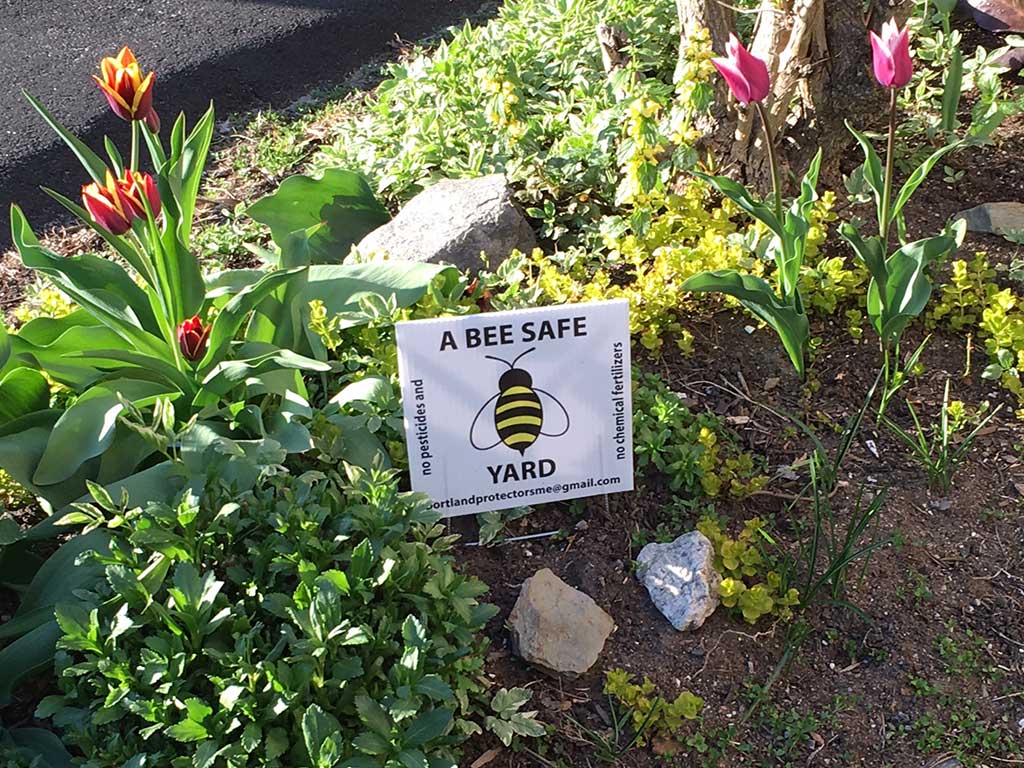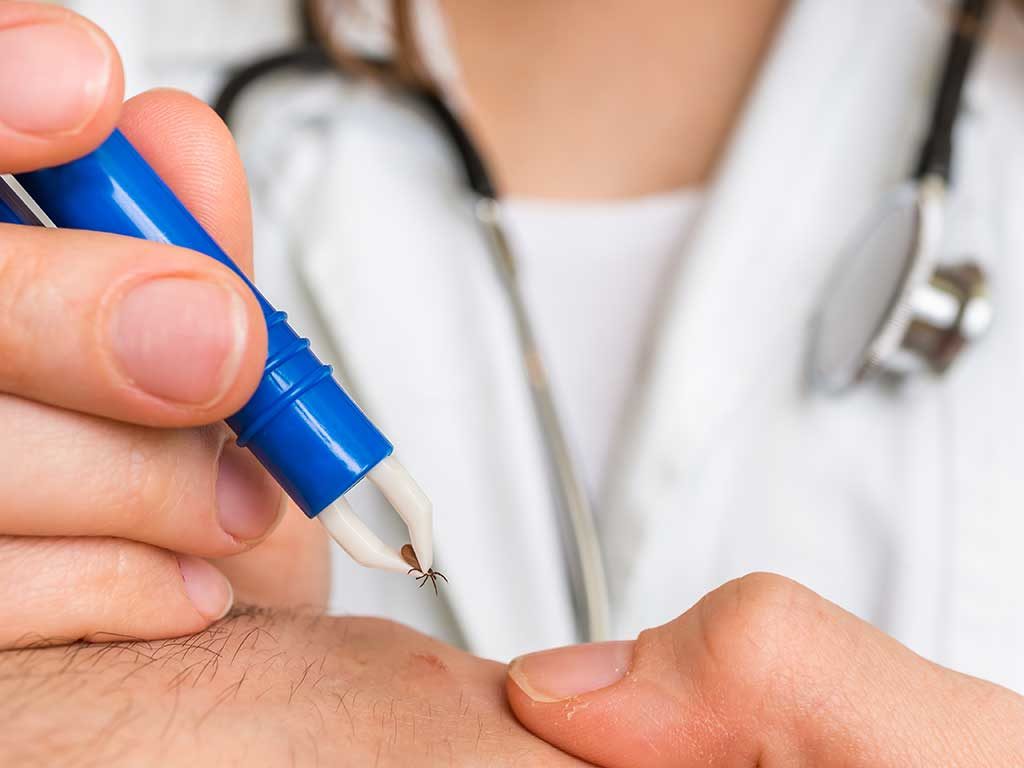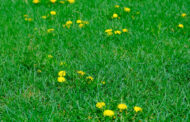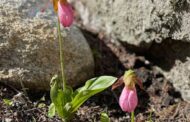Garden Survival Guide
Thanks to climate change, even our favorite outdoor activities seem filled with risk. Here are some tips for your garden survival.
By Tony Zeli
It’s spring! Time for us to get outside and enjoy our gardens. Whether a backyard retreat, a balcony sanctuary, or a community garden getaway, our gardens are an important part of enjoying the outdoors in our urban landscapes. But we all know in this time of escalating climate catastrophe that we must be extra careful out there.
Even paging through your favorite community newspaper, you read about the mounting threats. Every year the dangerous browntail moth, whose little hairs irritate the skin and eyes and can cause respiratory issues, expands its habitat over the city. Or you read that for the second year in a row many downtown Portlanders are receiving free lead soil tests thanks to contamination levels that the EPA considers an elevated risk. (If you live in Bayside, East Bayside, Parkside, or West End, sign up for a free garden soil test at https://tinyurl.com/FREESoilTest.)
Even stepping outside to do the gardening seems fraught with threats. So, here’s a few tips to help you survive your gardening experience.
THREAT #1: CHEMICALS

Pesticides, herbicides, and other garden chemicals contaminate the ground and water. In addition to killing unwanted insects and invasive vegetation, they can be toxic to wildlife and put ecosystems out of balance. Plus, they can pose a risk to human health. Mishandling garden chemicals can cause acute health symptoms like stinging eyes, rashes, and blisters. Scarier still, the pesticides in our environment and on our food can lead to cancer, especially a risk for children and pregnant women. So our first threat to garden survival? Chemicals.
The National Institute on Health publishes findings that support attempts to reduce exposure to pesticides, and we have done so with organic law care ordinances in Portland and South Portland. Now, the Maine State House is considering a bill from Representative Ben Collings of Portland to require organic lawn care statewide by banning high-risk cosmetic pesticides.
In Portland, a city ordinance bans synthetic pesticides on both public and private property and requires all property owners to go organic, though it includes exemptions and an emergency waiver provision. But whether your town requires it or not, going organic in the garden is a good idea for your health and the planet’s. So here are a few tips.
TIP: USE VINEGAR
A common and well-known alternative to synthetic chemicals is vinegar. But note, everyday household vinegar is not strong enough to do the job right. Horticultural vinegar is much stronger and will be more effective. Use with care as it will kill whatever it touches.
TIP: PLANT NATIVE
Why not plant native species to attract birds and pollinators? Attracting birds and helpful insects can help reduce pests, and pollinators are essential to a healthy garden. Native plants conserve biodiversity and create migration corridors for birds and insects. For more information on native species, visit the Wild Seed Project: http://wildseedproject.net. Or ask your local lawn and garden center and they will be happy to point you in the right direction.
TIP: MOW HIGH
A successful organic lawn begins with mowing high. The longer the grass, the deeper the roots. This reduces the need for watering and increases access to nutrients. Also, longer grass can shade out weeds. In fact, dandelions and crabgrass love lawns that are only 1-inch tall. But a 2- to 2.5-inch-tall lawn prevents dandelions from germinating and stifles crabgrass growth.
THREAT #2: TICKS

Okay, the long grass suggestion above begs the question: What about ticks? Like the browntail moth, ticks are one of the most hazardous insects in Maine. They love that our environment is warming. They are spreading throughout the state and are bringing high rates of tickborne diseases such as lyme disease, anaplasmosis, and babesiosis. This is a definite threat to our garden survival.
So, when we say mow high to help the grass grow without chemicals, let’s keep in mind this other threat we face, the tick, which likes the long grass. As such, Maine CDC recommends mowing your lawn to 3 inches or less. This lowers the humidity at ground level making it difficult for ticks to survive. Putting this together with our advice on shutting out weeds organically, it looks like 2.5” – 3” is the sweat spot for mowing.
Here are some additional tips to help you face down the deadly tick.
TIP: PLANT NATIVE
Yes, that one again. In particular, invasive plants such as Japanese barberry and glossy buckthorn provide the perfect habitat for ticks. If you already have these plants in your yard, consider removing them – and doing so without harmful chemicals. Then plant native species that help the birds and bees!
TIP: TAKE A SHOWER
Good advice is to take a shower within two hours after spending time outdoors to wash off any unattached ticks. Pay close attention to those warm areas ticks love to hide, like your underarms, behind the knees, in and around the ears, your belly button, and of course anywhere you have hair.
TIP: DON’T USE A MATCH
Do not use a hot match, petroleum jelly, dish-soap, nail polish, or other folk remedies to remove ticks. They might not work and may increase the risk of infection. If you have an attached tick, all you need is a pair of fine-tipped tweezers or a tick removal spoon. Grab the tick as close to the skin’s surface as possible and pull upward with steady, even pressure so you remove all the tick from under the skin.
TIP: BE MODEST
Cover up with long pants and long-sleeved shirts, light-colored clothing, and tuck your pant legs into your socks and your shirt into your pants.
That last tip to be modest is also an excellent way to avoid exposure to the sun, bringing us to the next garden threat.
THREAT #3: SKIN CANCER

Enjoying the spring sunshine is good. Not only is natural sunlight associated with a boost in mood, but UV rays can help provide essential nutrients (such as vitamin D). But the fact is that people who enjoy the outdoors are at risk for sunburn and skin cancer, and Maine has a higher-than-average incidence rate of skin cancer compared to the nation. So our next threat to garden survival: skin cancer.
As the ozone thins and more UVB rays reach our skin scientists say we can expect more DNA damage and skin cancer. Additionally, as temperatures clime, skin cancer risk increases. Research has shown that not only does UV radiation become more effective at creating tumors at higher temperatures but also that nonmelanoma skin cancer risk increases for every Celsius degree of temperature increase.
So, don’t pass on the sunscreen. Without appropriate sunscreen, sun exposure can contribute not only to melanoma risk, but also to skin aging and acute damage. Luckily, we have an overwhelming supply of possible protective products. There are countless sprays and lotions, designed in every SPF level and for every skin type, but it is recommended to use SPF 15 or higher and to reapply every two hours.
Here are some more tips to help you enjoy the sun without risking your life.
TIP: AVOID 10 AM – 4 PM
Sunlight is most damaging between 10 a.m. and 4 p.m., when the sun’s rays are the most intense. So, spend those hours indoors or in the shade when you can. Remember, a cloudy day does not mean you are protected from UV radiation. Clouds block only about 20 percent of harmful UV rays.
TIP: DON’T TAN
Avoid products like tanning beds. Tanning beds increase the risk of melanoma and other skin cancers without the healthy benefits of sunshine.
It’s a changing world we live in, full of threats from our changing climate. But we shouldn’t have to give up our gardening! Hope these tips help. Be safe out there.
Tony Zeli is publisher and editor. Reach him at thewestendnews@gmail.com.





